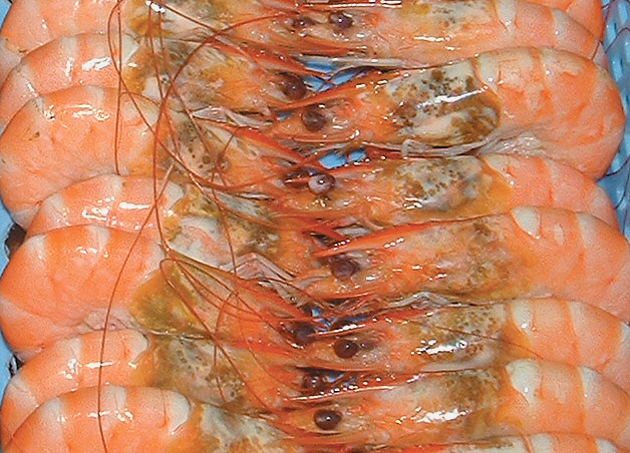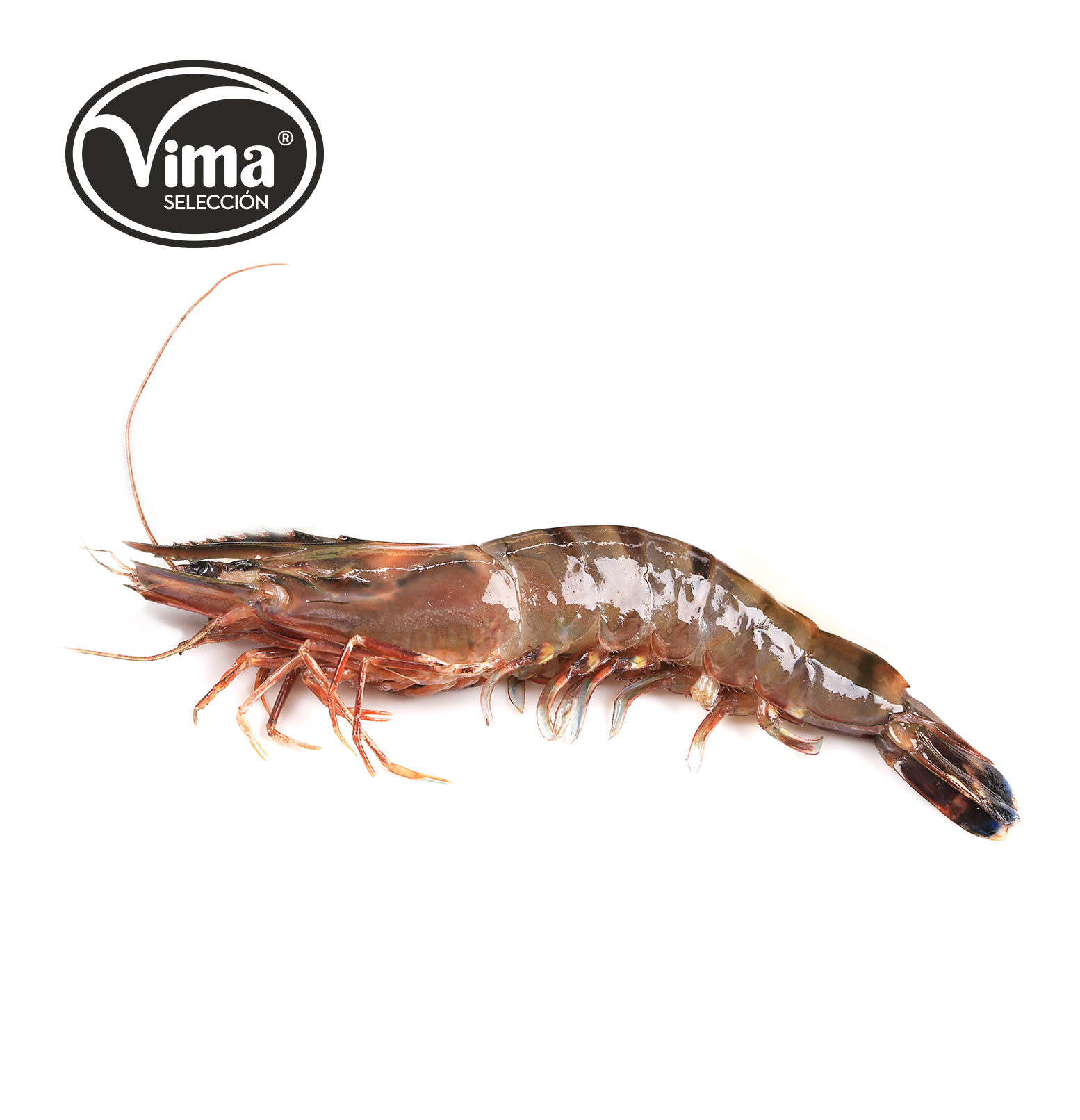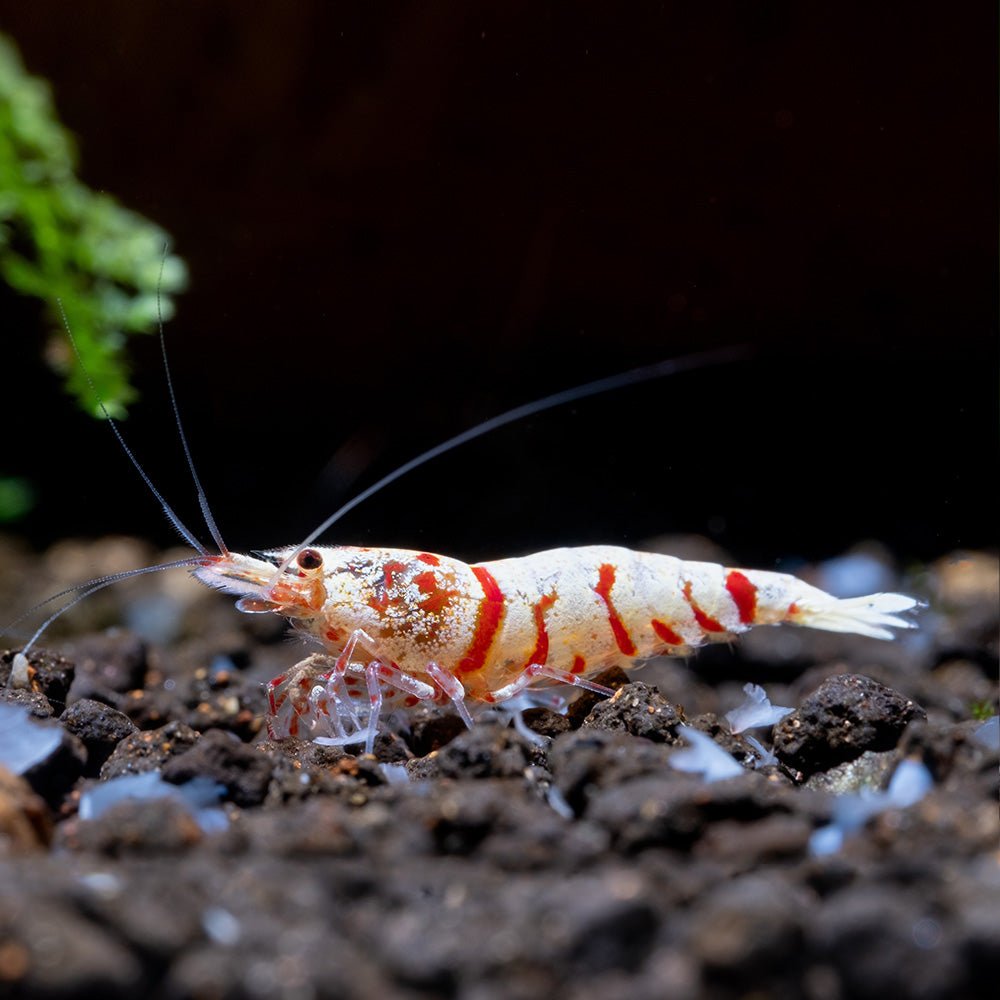Red Tiger Shrimp can suffer from bacterial infections and poor water quality. These issues often lead to stress and disease.
Red Tiger Shrimp are popular in home aquariums due to their vibrant colors and active behavior. They need clean water and proper care to thrive. Poor water quality and improper diet can lead to health problems. Bacterial infections are a common issue, often caused by a dirty environment.
Regular water changes and a balanced diet are essential for their well-being. Overcrowding can also stress these shrimp, making them more susceptible to diseases. Always monitor water parameters and provide a suitable habitat to keep Red Tiger Shrimp healthy. Proper care ensures they remain lively and colorful, enhancing your aquarium’s beauty.
Common Health Issues
Red Tiger Shrimp are beautiful and delicate creatures. They are prone to various health issues. Understanding these problems can help in maintaining their health. Below, we discuss some of the most common health problems.
Bacterial Infections
Bacterial infections are a significant health concern for Red Tiger Shrimp. They can result from poor water quality or stress. Symptoms include:
- Red or inflamed gills
- Loss of appetite
- Lethargy
To prevent bacterial infections, maintain clean water conditions. Regular water changes and using a filter can help. Isolate infected shrimp to avoid spreading the disease.
Fungal Diseases
Fungal diseases often appear as white or cotton-like growths on the shrimp. These diseases are usually a result of poor water conditions. Symptoms include:
- White patches on the body
- Sluggish movement
- Difficulty swimming
Treatment involves isolating the affected shrimp and improving water quality. You can also use anti-fungal treatments available in pet stores.
Parasitic Infestations
Parasites can cause severe health issues in Red Tiger Shrimp. They can attach to the shrimp’s body or gills. Common symptoms include:
- Visible parasites on the body
- Scratching against surfaces
- Poor growth
To treat parasitic infestations, remove the infected shrimp from the tank. Use a parasite-specific treatment to eliminate the parasites.
Keeping the tank clean and maintaining good water quality is essential. Regularly check your shrimp for signs of these health issues. Early detection and treatment are crucial for their well-being.

Credit: www.globalseafood.org
Symptoms To Watch For
Red Tiger Shrimp are beautiful, but they can have health issues. Knowing the symptoms helps keep your shrimp healthy and happy. Watch for changes in color, behavior, and physical form.
Color Changes
Color changes can signal health problems. A healthy Red Tiger Shrimp has bright red and white stripes. If their color fades or darkens, it may indicate stress or illness.
| Color Change | Possible Cause |
|---|---|
| Fading Colors | Stress or poor water quality |
| Darkened Colors | Bacterial infection or poor diet |
Behavioral Changes
Shrimp behavior is a good health indicator. Healthy shrimp are active and curious. If they become lethargic or hide often, something may be wrong.
- Lethargy: Look for signs of low energy or slow movement.
- Hiding: Excessive hiding can indicate stress or illness.
- Erratic Swimming: This may signal water quality issues or parasites.
Physical Deformities
Physical deformities are a clear sign of health issues. Healthy Red Tiger Shrimp have smooth, symmetrical bodies. Any irregularities should be addressed immediately.
- Shell Damage: Cracks or holes can indicate poor water conditions.
- Missing Limbs: This could be due to fights or poor molting.
- Swollen Abdomen: This may suggest bacterial infection or parasites.
Keeping an eye on these symptoms can help maintain a healthy tank. Regular observation and proper care are key to shrimp well-being.
Causes Of Health Problems
Red Tiger Shrimp are delicate creatures. They need special care. Understanding the causes of health problems is essential. This can help in maintaining their well-being.
1. Poor Water Quality
Poor water quality is a major cause of health issues. Shrimp need clean water to thrive. Water parameters like pH, temperature, and ammonia levels must be monitored.
Here are some critical water parameters:
| Parameter | Optimal Range |
|---|---|
| pH | 6.5 – 7.5 |
| Temperature | 22°C – 26°C |
| Ammonia | 0 ppm |
Regular water changes can prevent toxic buildup. Use a quality water conditioner to neutralize harmful substances. A good filtration system is also crucial.
2. Improper Nutrition
Diet plays a key role in shrimp health. Poor diet leads to malnutrition and disease. Shrimp need a balanced diet with proper nutrients.
Consider the following diet tips:
- High-quality shrimp pellets
- Fresh vegetables like spinach and zucchini
- Calcium supplements for shell health
Avoid overfeeding. Uneaten food can pollute the tank. Feed small amounts twice daily. Monitor their eating habits to ensure they get enough nutrients.
3. Stress Factors
Stress can weaken a shrimp’s immune system. Stress factors include overcrowding, sudden water changes, and poor tank conditions.
To reduce stress, consider these tips:
- Maintain a stable environment.
- Avoid sudden temperature changes.
- Provide hiding spots like plants and caves.
- Keep the tank clean and well-maintained.
Minimize handling and disturbances. A calm environment helps shrimp stay healthy.

Credit: flipaquatics.com
Prevention Methods
Red Tiger Shrimp are delicate creatures that require specific care. Preventing health problems can extend their life and ensure their well-being. By following some simple methods, you can keep your shrimp healthy and happy.
Water Testing
Water quality is crucial for shrimp health. Regular water testing helps detect harmful elements. Use a reliable water testing kit weekly. Check for ammonia, nitrites, nitrates, and pH levels.
- Ammonia: Keep it at 0 ppm
- Nitrites: Maintain at 0 ppm
- Nitrates: Below 20 ppm
- pH: Between 6.5 and 7.5
Consistent monitoring ensures a safe environment for your shrimp.
Balanced Diet
A balanced diet is essential for shrimp health. Provide a variety of foods to meet their nutritional needs. Feed them high-quality shrimp pellets and occasional vegetables.
- Shrimp Pellets
- Blanched Spinach
- Zucchini Slices
Feed small amounts to avoid overfeeding. Remove uneaten food to prevent water contamination.
Stress Reduction
Stress reduction is vital for preventing health issues. Maintain a stable environment to reduce stress. Avoid sudden changes in water temperature or quality.
- Keep tank temperature between 70-78°F
- Avoid loud noises around the tank
- Provide hiding spots using plants or decorations
A peaceful environment helps your shrimp thrive and stay healthy.
Treatment Options
Treating Red Tiger Shrimp health issues requires careful attention and proper methods. There are several effective options to ensure their well-being. These include medications, natural remedies, and quarantine procedures.
Medications
Medications can treat specific diseases in Red Tiger Shrimp. Common medications include:
- Anti-fungal treatments: Useful for fungal infections.
- Antibiotics: Effective against bacterial infections.
- Anti-parasitic drugs: Target parasites that harm shrimp.
Always follow the dosage instructions carefully. Overdosing can harm shrimp. Consult a vet for the best medication and dosage.
Natural Remedies
Natural remedies offer a gentle approach to treating shrimp. These methods include:
- Indian almond leaves: Release beneficial tannins into the water.
- Garlic: Acts as a natural anti-parasitic agent.
- Salt baths: Help reduce stress and kill parasites.
Natural remedies are less invasive but require consistent application. Keep monitoring shrimp health closely.
Quarantine Procedures
Quarantine is essential for preventing the spread of diseases. Follow these steps:
- Isolate the infected shrimp in a separate tank.
- Maintain optimal water conditions in the quarantine tank.
- Observe the shrimp daily for any changes.
- Treat the infected shrimp as needed.
Quarantine helps protect the main tank from outbreaks. It also allows targeted treatment of sick shrimp.

Credit: vimafoods.com
Water Quality Management
Maintaining water quality is crucial for the health of Red Tiger Shrimp. Poor water conditions can lead to severe health issues. Proper management ensures a thriving environment for your shrimp.
Ph Levels
The ideal pH level for Red Tiger Shrimp is between 6.5 and 7.5. Too high or too low pH can stress your shrimp. Stress makes them more prone to diseases.
- Use a pH testing kit regularly.
- Adjust pH with safe products if needed.
- Avoid sudden pH changes; it can shock the shrimp.
Temperature Control
Red Tiger Shrimp need a stable temperature. The ideal range is between 72°F and 78°F (22°C to 26°C).
Fluctuating temperatures can harm your shrimp. Use a reliable aquarium heater to maintain the temperature.
- Install a thermometer to monitor the water temperature.
- Avoid placing the tank near windows or heat sources.
- Regularly check the heater’s functionality.
Filtration Systems
A good filtration system keeps the water clean and free from toxins. It helps in maintaining healthy shrimp.
| Filter Type | Benefits |
|---|---|
| Sponge Filter | Gentle flow, ideal for shrimp |
| Canister Filter | Effective for larger tanks |
Ensure the filter is suitable for your tank size. Clean the filter regularly to maintain its efficiency.
- Choose filters with adjustable flow rates.
- Check and clean filter sponges weekly.
- Avoid strong currents that can stress the shrimp.
Diet And Nutrition
Maintaining the right diet and nutrition is crucial for Red Tiger Shrimp health. A balanced diet helps prevent health problems. Ensuring they get essential nutrients is important for their well-being.
Essential Nutrients
Red Tiger Shrimp need a diet rich in protein, vitamins, and minerals. Protein helps with growth and repair. Vitamins boost their immune system. Minerals keep their shells strong and healthy. A balanced diet includes:
- Algae
- Spirulina
- High-quality shrimp pellets
- Boiled vegetables like spinach and zucchini
Feeding Schedules
Regular feeding schedules ensure Red Tiger Shrimp get enough nutrients. Feed them small amounts twice a day. Remove uneaten food after an hour to avoid water pollution. Here is a simple feeding schedule:
| Time | Food Type |
|---|---|
| Morning | High-quality shrimp pellets |
| Evening | Boiled vegetables or algae |
Supplement Recommendations
Supplements help fill nutritional gaps. They ensure Red Tiger Shrimp stay healthy. Recommended supplements include:
- Calcium supplements for strong shells
- Multivitamin drops for overall health
- Probiotic supplements to aid digestion
Follow the instructions on the supplement package. Over-supplementing can harm shrimp. Always provide a variety of foods for a balanced diet.
Stress Management
Managing stress is vital for the health of Red Tiger Shrimp. Stress can weaken their immune system. This makes them more susceptible to diseases. Let’s explore three key areas for effective stress management.
Tank Environment
A well-maintained tank is essential for Red Tiger Shrimp. Ensure the water parameters are stable. Use a good-quality filter to keep the water clean. Maintain a pH level between 6.5 and 7.5. Keep the temperature between 72°F and 78°F.
Provide plenty of hiding spots with plants and decorations. Shrimp need places to hide when they molt. This reduces their stress levels. Keep the tank clean and perform regular water changes. Avoid sudden changes in water conditions.
Compatible Tank Mates
Choosing the right tank mates is crucial. Not all fish and shrimp are good companions. Avoid aggressive species that may harm your shrimp. Compatible tank mates include:
- Small, peaceful fish
- Other shrimp species
- Snails
These creatures coexist peacefully with Red Tiger Shrimp. Overcrowding the tank can also cause stress. Provide enough space for each inhabitant.
Regular Monitoring
Regular monitoring helps in early detection of stress signs. Check your shrimp daily for any unusual behavior. Look for signs like:
- Reduced activity
- Loss of appetite
- Color fading
Use water test kits to check parameters regularly. Record the results to spot any trends. Prompt action can prevent serious health problems.
Regular monitoring ensures a healthy and stress-free environment. Keeping a close eye on your shrimp keeps them happy and healthy.
Frequently Asked Questions
What Are The Negative Effects Of Tiger Shrimp?
Tiger shrimp can disrupt local ecosystems, outcompete native species, and spread diseases. Their farming can cause habitat destruction and pollution.
Are Tiger Shrimp Healthy?
Yes, tiger shrimp are healthy. They are rich in protein, low in fat, and provide essential vitamins and minerals.
Are Red Shrimp Healthy?
Yes, red shrimp are healthy. They are low in calories and high in protein. Red shrimp also provide essential nutrients like omega-3 fatty acids, vitamins, and minerals. Incorporating them into your diet can support heart health and overall wellness.
How Can You Tell If Shrimp Are Sick?
Sick shrimp may show lethargy, discoloration, reduced appetite, or unusual swimming behavior. Watch for white spots or cloudy eyes.
Conclusion
Caring for Red Tiger Shrimp involves vigilance and proper maintenance. Early detection of health problems ensures swift treatment. Regular water changes and balanced diets are essential. Avoid overfeeding and monitor tank conditions closely. With proper care, your Red Tiger Shrimp can thrive and remain healthy.
Happy shrimp keeping leads to a vibrant aquarium.
